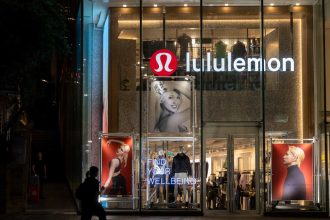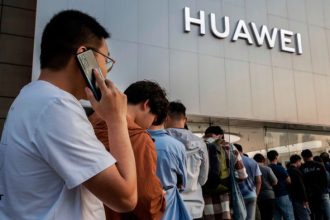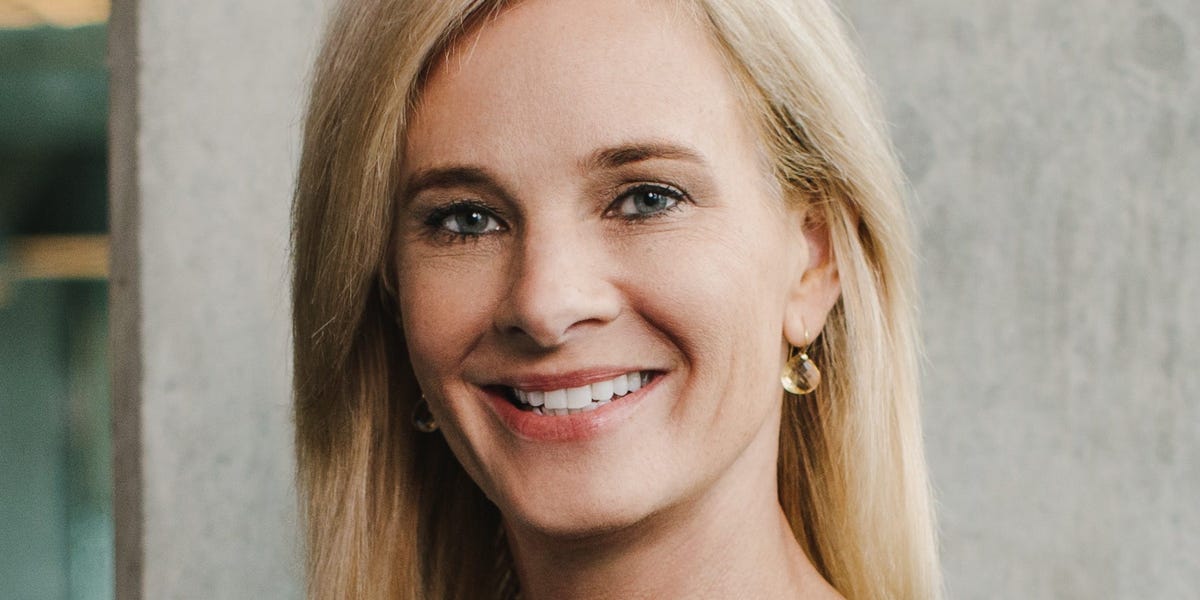For most observers, it seems as if Intuit is entering 2024 the same way it usually does: an influx of advertising, including a splashy Super Bowl spot, touting TurboTax to help people get through the dreaded tax season.
But the stakes are much higher this year because Intuit, which hosts an investor meeting January 18, is entering 2024 with what it calls a “branded house strategy,” which it first started implementing last March. The idea was to push the Intuit name itself into the consumer consciousness, alongside individual brands like TurboTax, QuickBooks, Mailchimp, and CreditKarma.
“We realized after doing studies that when people know that these brands are from Intuit, purchase intent goes up and additionally trust goes up in those brands,” Intuit CMO Lara Balazs told Business Insider.
While Intuit isn’t yet a full year into this transition, very early returns suggest the decision is paying off. Intuit’s stock was soaring by the end of 2023, up nearly 50% from the beginning of the year, and revenue in the first quarter of its fiscal year, reported in November, was up 15%.
But there’s still a big test coming. The new marketing strategy will have to support some of Intuit’s newest and most important revenue-driving initiatives that cut across its different sub-brands.
Earlier this month, Intuit for the first time integrated TurboTax’s capabilities with QuickBooks and Credit Karma. Company CEO Sasan Goodarzi has stated that increasing the average revenue per customer, or ARPC, is key to its current and future performance.
Another key way Intuit will increase that all-important ARPC is through Intuit Assist, a generative AI-powered assistant for small businesses and consumers that rolled out across TurboTax and Mailchimp in late 2023, and will come to QuickBooks and CreditKarma in the first half of 2024.
If the Assist products catch on, they’ll push Intuit’s business beyond the well-known tools that people use to manage their finances by themselves.
CEO Goodarzi touted the importance of Assist during Intuit’s November earnings call: “It will change our relationship with customers as we move from a transactional workflow platform to a trusted assistant that our customers rely on daily to power their prosperity.”
And providing that financial assistance, Goodarzi said during an investors conference in December, represents a $30 billion opportunity that Intuit has not claimed.
But TurboTax competitor H&R Block is also reaching for this opportunity, and has gone on the offensive with its own AI-powered tax assistant, released in December. A bevy of new H&R Block ads tout the assistant, and takes a shot at TurboTax: “So long, TurboTax!” shouts one actor in a recent spot.
“Comparative marketing is a common practice and we’ve used it for many years to help consumers easily see the benefits of working with H&R Block,” an H&R Block spokesperson said.
Given the competitive environment, Intuit needs to make sure people know of its own offering.
“People just aren’t aware, because of how strongly we grew the do-it-yourself perception within TurboTax,” Balazs said.
And pushing the message across the house brand can be key to shifting this perception, said DJ Stout, a partner at the design firm Pentagram.
“Intuit’s move to reintroduce its brand in a way that reflects its core and the way the brand and its sub-brands engage with its users is a smart idea because it allows Intuit to celebrate, examine, and adjust its brand and address elements of the identity that may or may not be working for it and its customers,” said Stout.
Rebuilding old tech to chase a big bet
Intuit is also gearing up for another revenue-driving disruption that will rely heavily on Balazs’ marketing chops: the company is pushing its products to the mid-market, which Intuit defines as companies that have 10-100 employees.
Goodarzi has described the mid-market as one of Intuit’s “big bets” to drive revenue growth. But grabbing these customers required Intuit to rebuild its marketing infrastructure.
“One of the things we shifted that has helped us greatly is our go-to-market technology was very much aimed at the consumer,” Balazs said. “What we realized is that we have to start including a mid-market orientation.” This meant that Intuit also had to make sure it was capturing leads and feeding them back to the sales team dedicated to the mid-market.
It sounds easy, but Intuit is a 40-year-old company that started on the ancient DOS operating system and had a lot of legacy tech.
“There was a tech debt, but we’ve leaned into it and updated,” Balazs said.
Read the full article here





